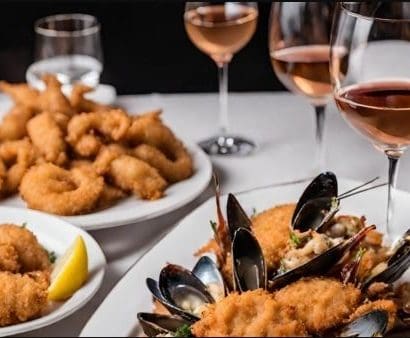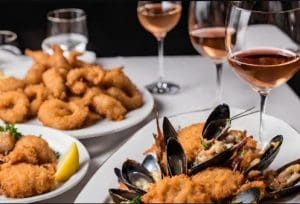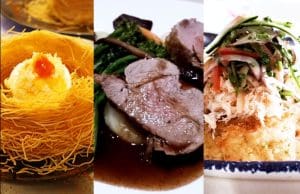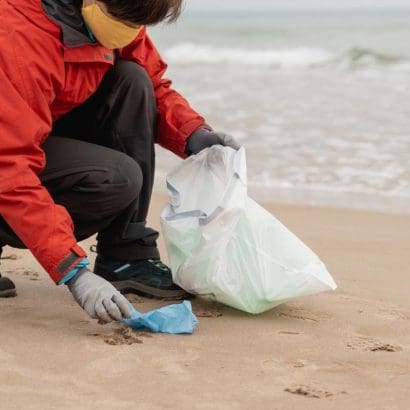
The relationship between seafood and wine has captivated food lovers for centuries. This duo not only elevates the culinary experience but represents a unique blend of tradition and art. In this article, we’ll explore the concept of the Seafood and Wine Alliance in depth—an alliance that transforms each meal into a memorable experience. Discover what makes these two elements complement each other and learn how to achieve the perfect pairing.
Contents
- What is the Seafood and Wine Alliance?🐟
- Basic Principles of the Seafood and Wine Alliance🐟
- Specific Pairings for an Exceptional Seafood and Wine Alliance🐟
- How to Create Your Own Seafood and Wine Alliance at Home
- The Benefits of the Seafood and Wine Alliance in Culinary Tourism🐟
- The Wonder of the Seafood and Wine Alliance🐟
What is the Seafood and Wine Alliance?🐟
At its core, the Seafood and Wine Alliance is a pairing strategy designed to maximize the flavor and freshness of seafood with the ideal wine. Knowing which type of wine best matches each kind of seafood elevates the dining experience and highlights the unique characteristics of each dish.
Basic Principles of the Seafood and Wine Alliance🐟
To achieve the perfect pairing, certain principles guide the Seafood and Wine Alliance. These principles can help you understand better which wines to choose and why they work so well with certain types of seafood.
1. Balance Between Texture and Flavor
Each type of seafood has a unique texture and flavor, and the wine should be chosen based on these. The texture of seafood can range from the softness of fish fillets to the firmness of shellfish. For example:
-
- White Wines: Usually the preferred choice for fish and seafood due to their lightness and acidity.
- Rosé Wines: Offer a more versatile flavor profile, ideal for more complex dishes or those with additional ingredients.
For a culinary adventure that highlights the versatility of seafood, explore our article on “5 Recipes with Mackerel Fish: A Global Taste Journey“ and discover delicious ways to enjoy this nutrient-packed fish from around the world.
2. Acidity and Freshness
Fresh seafood has a delicate flavor that is enhanced by wines with pronounced acidity. This acidity helps cleanse the palate, allowing you to enjoy each bite without overpowering the seafood’s taste.
-
- Sauvignon Blanc: The vibrant acidity of this wine complements the subtle flavors of oysters and mussels.
- Chardonnay: Its moderate acidity and fruity notes make it an excellent choice for richer fish.
3. The Influence of Terroir
Wines produced in coastal regions often have a natural composition that makes them ideal for seafood. This connection between terroir and seafood creates authentic and harmonious pairings.
Specific Pairings for an Exceptional Seafood and Wine Alliance🐟
White Wine and White Fish: An Unfailing Classic
For white fish like cod or sole, a light and refreshing white wine is ideal. Its subtle flavor complements the seafood without overwhelming it.
-
- Chardonnay with Cod: The buttery character of a good Chardonnay enhances the smooth texture of cod.
- Pinot Grigio with Sole: This light wine accentuates the salty, fresh notes of sole.
Shellfish and Rosé Wines: A Versatile Combination
The flavor of shellfish, such as lobster and shrimp, calls for a wine that highlights their nuances and balances their natural sweetness. Rosés play a crucial role here.
-
- Provence Rosé with Lobster: The freshness of Rosé harmonizes with the firm texture and sweet flavor of lobster.
- Garnacha Rosé with Grilled Shrimp: The intense fruit of this wine enhances the smoky flavor of shrimp, creating a memorable combination.
To dive deeper into the importance of preserving ocean ecosystems, check out “Marine Life Education: Understanding and Protecting Our Oceans“ for essential insights on marine conservation and sustainable practices.
Sparkling Wine and Oysters: Refinement in Every Sip
Oysters have a saline flavor and a smooth texture that require a sparkling wine with bright acidity. This type of wine cleanses the palate and creates a delicious experience in every bite.
-
- Brut Champagne with Fresh Oysters: The acidity of champagne highlights the fresh flavor of oysters, creating an elegant and sophisticated combination.
- Cava with Mussels: Spanish Cava adds a touch of freshness that pairs perfectly with steamed mussels.
How to Create Your Own Seafood and Wine Alliance at Home
Creating a gourmet experience at home can be as simple as choosing the right wine. Here are some useful tips for those who want to experiment with the Seafood and Wine Alliance in the comfort of their own homes.
1. Know the Main Flavors of Your Ingredients
Before selecting the wine, take a moment to appreciate the primary flavors of your seafood. Acidity, sweetness, and texture should guide your choice of wine.
2. Go for Local Wines
Local wines often have characteristics that harmonize with seafood from the same region. If you have access to fresh local seafood, consider pairing it with a wine from the same area.
3. Experiment and Don’t Be Afraid of New Combinations
While there are tried-and-true pairings, the best part of this alliance is experimenting and discovering new flavors. Don’t be afraid to try less conventional wines with your favorite seafood.
The Benefits of the Seafood and Wine Alliance in Culinary Tourism🐟
The Seafood and Wine Alliance is also a growing trend in culinary tourism. Destinations like France, Spain, and the California coast are famous for their seafood and wine pairings, attracting tourists from all over the world.
Unforgettable Culinary Experiences
Seafood and wine tours offer travelers the opportunity to taste local flavors at their best. Additionally, these experiences are often accompanied by ocean views, creating an unmatched atmosphere.
Sustainability and Local Commerce
The rise of this alliance also promotes sustainability, as many restaurants and wineries choose local and sustainably sourced products. This aspect is important both to travelers and residents of coastal regions.
The Wonder of the Seafood and Wine Alliance🐟
The Seafood and Wine Alliance is much more than a combination of flavors; it’s an art that involves balance, knowledge, and creativity. From the white wine that accompanies delicate fish to the sparkling wine that enhances oysters, each pairing has the potential to offer an unforgettable experience. By understanding these principles, you’ll not only improve your meals but also experience gastronomy as a form of art.


